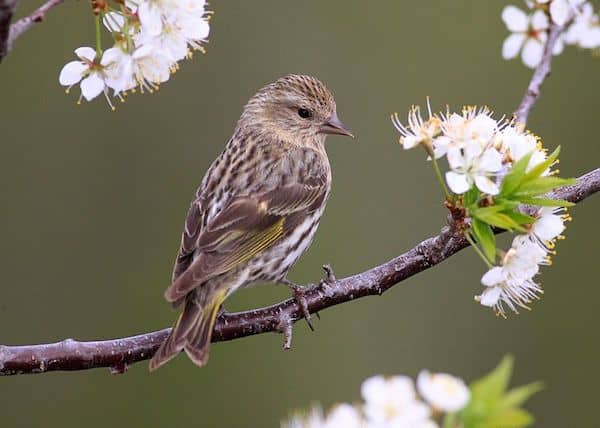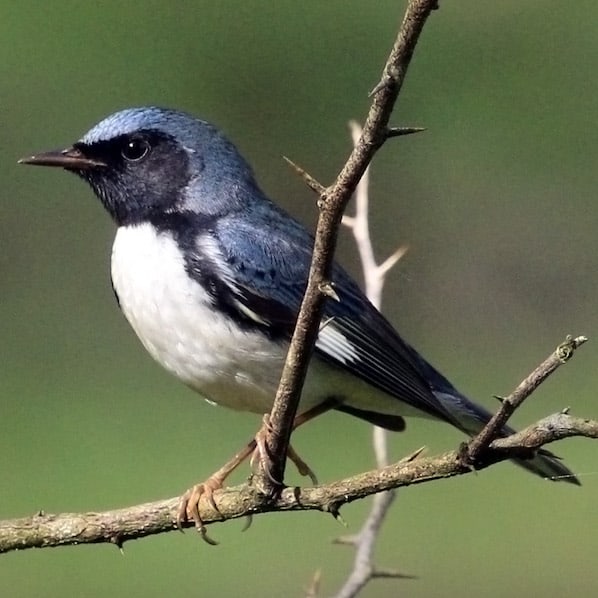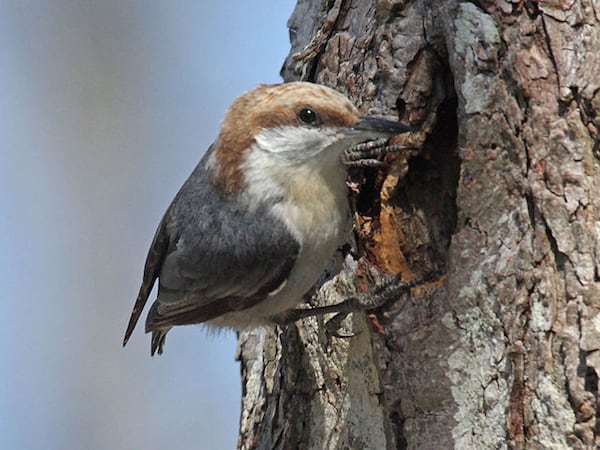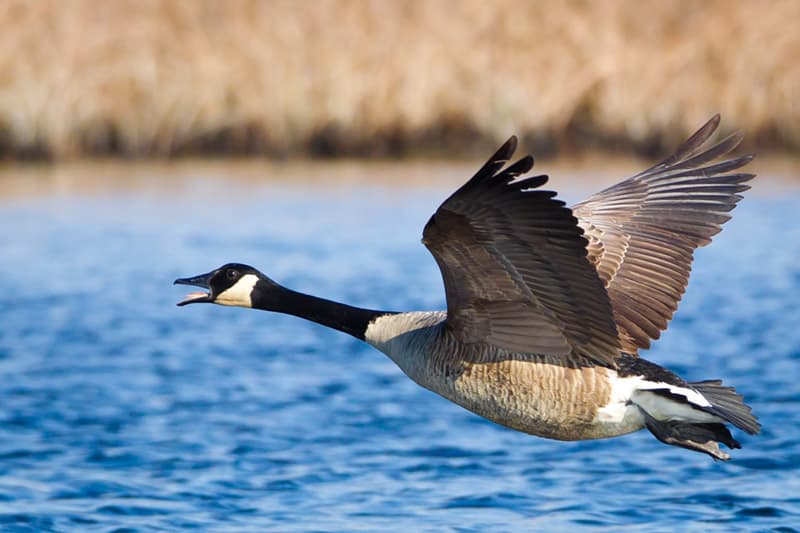Look For
This streaky brown finch has a narrow, fine-tipped bill and shows yellow flashes in the wings and tail in flight. The pine siskin is 5 inches in length. They are often overlooked when mixed in with winter flocks of American goldfinches, which are drab yellow (but not streaky) in nonbreeding plumage. The siskin’s heavy streaking also makes it resemble a female house finch, but note the siskin’s smaller, finer bill.
Find It
Across the Midwest and eastern U.S. the pine siskin is a winter visitor. It nests in the coniferous forests of the far North and throughout the West, but makes nearly annual appearances throughout eastern North America. During the spring and summer, pine siskins are never far from conifers, alders, and the mixed woodlands in which they breed and forage.
In winter, siskins often move southward—sometimes in great numbers—in search of food. They forage in weedy fields, hedgerows, pine forests, and even at backyard feeding stations.
Feeding Behavior
Siskins eat grass and weed seeds, especially wild thistle seeds, plus tree buds, pine seeds, berries, and some insects. Expert clingers, siskins will hang upside down on a catkin clump, pinecone, or weed stem and pry seeds loose with their finely pointed bills.
Caterpillars, insect larvae, and spiders are also consumed. At feeders, siskins relish sunflower bits (they are unable to crack open the whole seeds themselves) and thistle (Niger) seed.
Nesting Behavior
Male siskins begin courting females in late winter, before reaching their breeding grounds, as the winter feeding flocks are dispersing. Siskins are known to nest in loose colonies in conifer or mixed conifer-deciduous forests.
The female builds the cup-shaped nest out of weed stems, grasses, bark strips, vines, and rootlets and lines it with soft material such as animal fur, feathers, thistledown, or moss. She lays three to five eggs and incubates them for about two weeks, during which time the male may bring her food. Both parents feed the nestlings, which leave the nest about 15 days after hatching.
Wow!
In the spring following “invasion” winters, when thousands of pine siskins move south for food, some siskins stay behind to nest, beyond the boundaries of their normal breeding range.
Listen For
Pine siskins are very vocal birds and commonly utter a harsh, rising call: zzzrrreeeee? They also emit a variety of thin, high twitters, often in paired notes: twee-twee, jee-jee, twee-twee!




